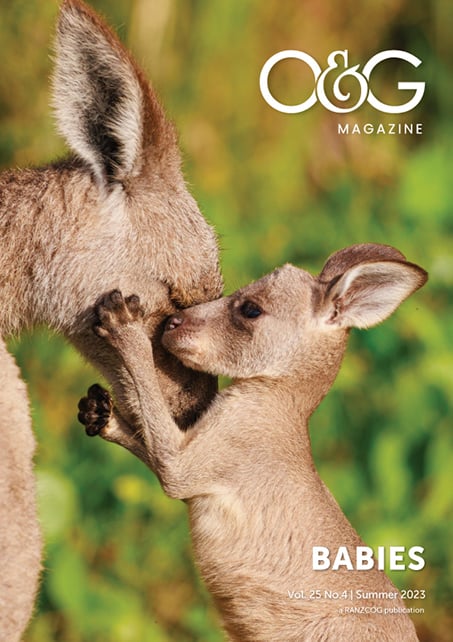RANZCOG Position Statement
The Royal Australian and New Zealand College of Obstetricians and Gynaecologists (RANZCOG) supports the rights and needs of all people who are breastfeeding/lactating.
RANZCOG fully supports the rights and needs of all people who are breastfeeding/lactating, recognising that milk from the mother/parent is the optimum source of nutrition for the first six months of life, and that continued feeding beyond two years of age has ongoing benefits for both mother/parent and infant.¹ Breastfeeding/lactating is a physiological process and regular pumping of milk may be required for the health of both the mother/parent and infant when they are separated. Milk supply is reliant on frequent and effective emptying.
Returning to work after parental leave can challenge a feeding relationship. RANZCOG recognises that maintaining effective emptying can be further challenged when doctors are rostered to an unpredictable or more demanding work setting such as the operating theatre and labour ward. Doctors are more likely to initiate breastfeeding/lactation but then have a shorter duration of feeding time available. Those who are in procedural specialities are less likely to continue feeding to one-year post-partum.2,3
RANZCOG commits to:
- Creating a culture of support that does not discriminate against breastfeeding/lactating members and trainees, in keeping with RANZCOG’s Gender Equity Policy;
- Ensuring training supervisors and the Training Support Unit are aware of the RANZCOG Breastfeeding/Lactation in the Workplace Position Statement and recognises the importance of supporting breastfeeding/lactation for trainees returning to work after parental leave;
- Providing parenting facilities including an appropriate feeding space at RANZCOG events, where applicable; and
- Providing adequate provisions and facilities during examinations for candidates to pump.
RANZCOG recommends that members’ workplaces should also support breastfeeding/lactation and pumping and have their own Breastfeeding/Lactation in the Workplace policies to support employees that return to work and continue feeding.
- A Breastfeeding/Lactation in the Workplace Policy should ideally include:
- Allowance for protected reasonable break times (these breaks may be a legislated requirement for the employer) to allow regular pumping, or for the individual to feed the infant directly.
- Provisions for a pumping location, that is separate from a bathroom, and adjacent to clinical areas such as clinics, labour wards, and/or theatres. Ideally, a pumping space should be private, not shared with patients, should contain a desk, chair, power point, and sink, and have close access to a refrigerator. Provision of a phone and computer will allow the clinician to continue some clinical duties if they elect to do so.
- Support for clinicians who choose to use a wearable pump in a clinical setting, where appropriate to do so. Noting that exposure to milk is not an infectious hazard.4 However, standard OT attire should still be worn, and the pump should be placed and removed in a non-clinical environment. This advice is consistent with policies for clinicians who utilise other medical devices, such as insulin pumps and stomas, in clinical areas.
Supporting breastfeeding/lactation in the workplace recognises the importance of milk from the mother/parent. Adequate provisions for maintaining breastfeeding/lactation on return to work assists with a healthy work/life balance and removes barriers to returning to work after parental leave.
RANZCOG aims to create a culture of support and respect for breastfeeding/lactation. RANZCOG members and trainees can act as advocates and role models for other clinicians who may feel less empowered to pump or breastfeed/lactate during the workday, helping to normalise this important physiological process.
References
1. World Health Organization. Breastfeeding international guidelines. 2023.
Available at www.who.int/health-topics/breastfeeding
2. Sattari M, Levine D, Serwint JR. Physician mothers: an unlikely high-risk
group-call for action. Breastfeeding medicine: the official journal of the
Academy of Breastfeed Med 2010;5(1):35–39. doi:10.1089/bfm.2008.0132
3. Melnitchouk N, Scully RE, Davids JS. Barriers to breastfeeding for US
physicians who are mothers. JAMA Intern Med 2018;178(8):1130–1132.
doi:10.1001/jamainternmed.2018.0320
4. Centers for Disease Control and Prevention (CDC). Breastfeeding: frequently
asked questions. 2003. Available at www.cdc.gov/breastfeeding/
faq






Leave a Reply